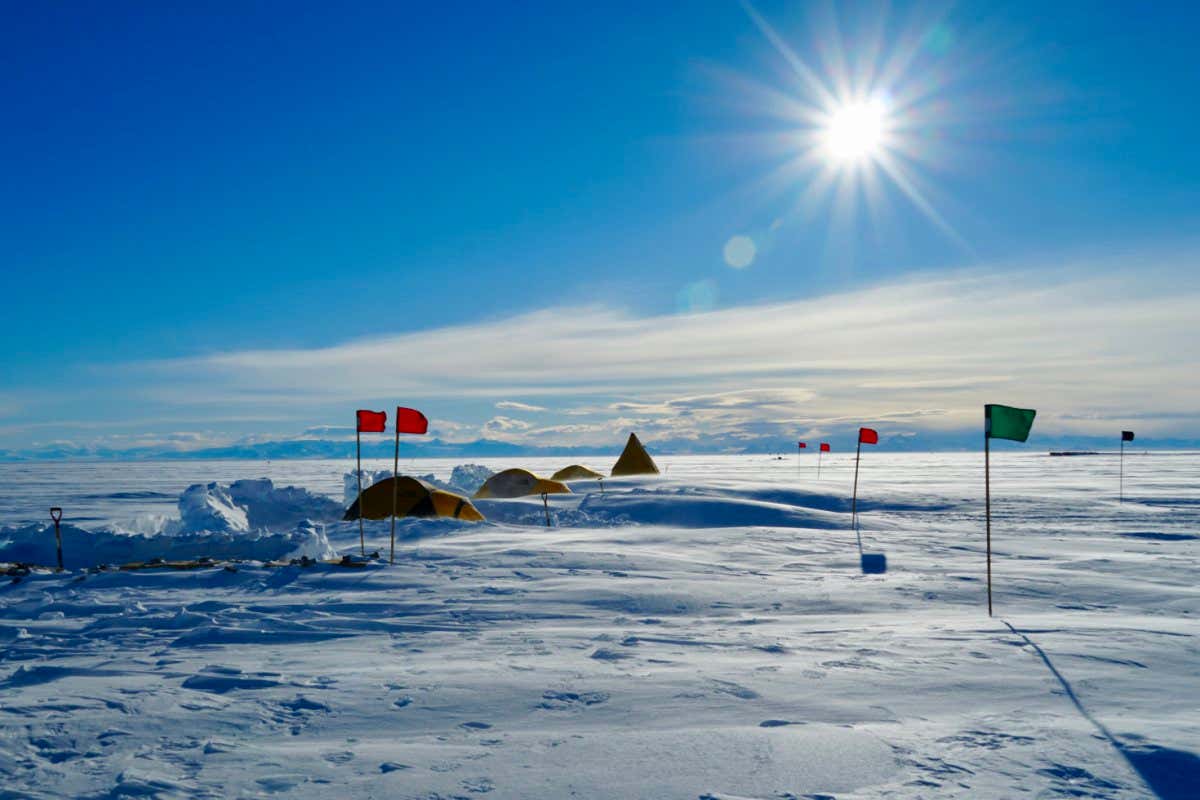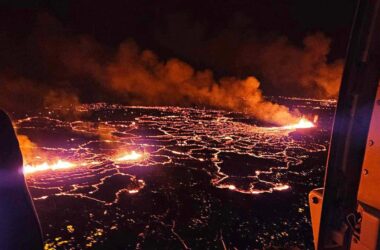View of the research team’s field camp on the Whillans ice stream, West Antarctica, with the Transantarctic Mountains in the background
Kerry Key, Lamont-Doherty Earth Observatory, Columbia University
A recent study has revealed the existence of a significant water source under the Antarctic ice sheet. While scientists have long suspected the presence of groundwater beneath the ice, this finding provides conclusive evidence for its existence.
Within the ice sheet of Antarctica, there are channels of fast-moving ice that flow towards the ocean. Chloe Gustafson, a researcher at the University of California, San Diego, explains that these ice streams play a crucial role in understanding the movement of ice from Antarctica into the ocean. She compares them to water slides, noting that the presence of water at the base of an ice stream can accelerate its movement.
Prior research has shown the existence of shallow pools of water between the ice streams and the ground below. However, Gustafson and her team wanted to investigate if there was a larger reservoir of flowing water beneath the Whillans ice stream in West Antarctica.
Using seismic activity and electromagnetic fields, the researchers discovered a layer of sediment, more than one kilometer thick, saturated with a mixture of fresh glacier water and ancient seawater. This immense aquifer contains over ten times the amount of water found in the shallower pools beneath the ice stream, and there seems to be a connection between the deep and shallow areas, indicating water flow between them.
The findings suggest that this groundwater reservoir may play a significant role in regulating the flow rate of ice streams. Understanding this process is crucial for predicting the impact of climate change on sea levels. Gustafson emphasizes that the entire Antarctic ice sheet contains enough water to cause a 57-meter rise in sea levels. Therefore, understanding the rate at which the ice will flow into the ocean is of utmost importance.
Sign up to our free Fix the Planet newsletter to get a dose of climate optimism delivered straight to your inbox, every Thursday








